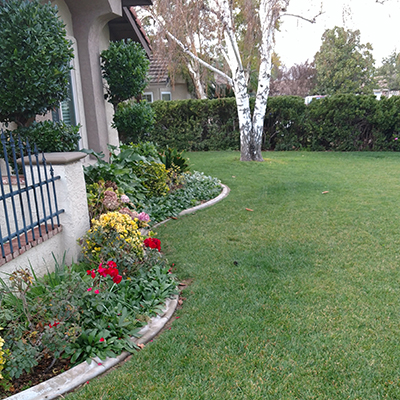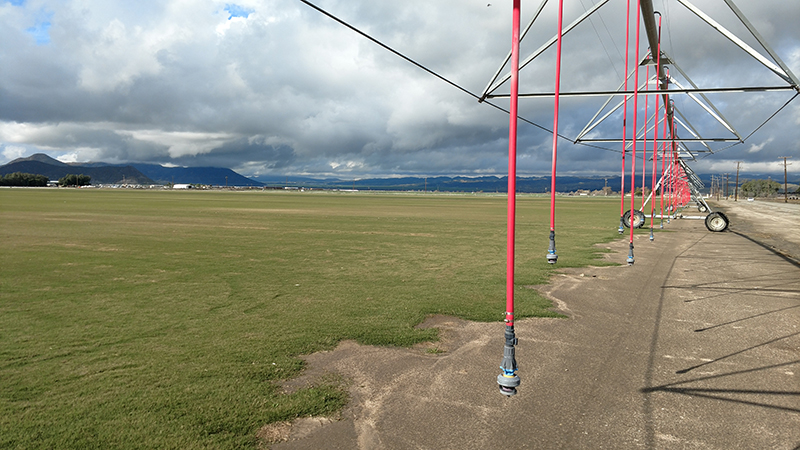With colder weather of winter, the care of turfgrass change dramatically from the hot summer months. Here are a few highlights for those living in the majority of California:

Front yard with Elite Plus Fescue in winter
FESCUE WINTER CARE
- Fescue turfgrass stays green in the winter which is why it has been the grass of choice for California lawns. If you want to bump up the color even more, apply a balanced fertilizer such as a 21-7-14 blend.
- Less water – To save water, shut off your irrigation controller after rain events. Only turn it back on in the spring or if we have a couple weeks with no rain.
- Less mowing – Fescue grows slower in the cooler months, meaning less mowing. I mow my lawn once every two weeks in the winter rather than weekly in the warmer months.
BERMUDA & ST. AUGUSTINE WINTER CARE
- During the cold months, Hybrid Bermuda and St. Augustine go dormant. The negative is they are brown in color. The positive is you do not need to mow, water or fertilize. This gives you time to relax, watch some football or binge-watch your favorite TV series.

Celebration Hybrid Bermuda in partial dormancy at our Moreno Valley farm.
CLIMATE EXCEPTIONS
- Desert – The Palm Springs area traditionally overseeds Bermuda grass with Ryegrass for all those visiting tourists. Ryegrass should be mowed weekly and fertilized once in the winter months to maintain optimal color. Regular winter irrigation will also be needed in the desert climates.
- Mountains – hopefully your yard is covered in snow and, regardless of the grass type, you need do nothing until spring except make sure your irrigation system does not freeze up.

